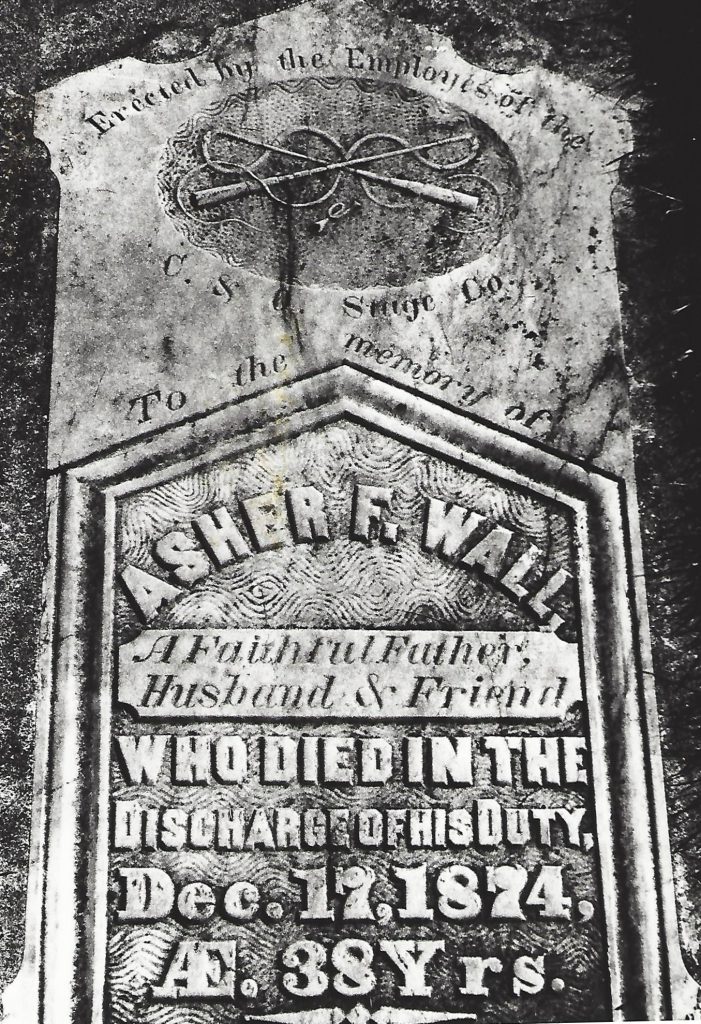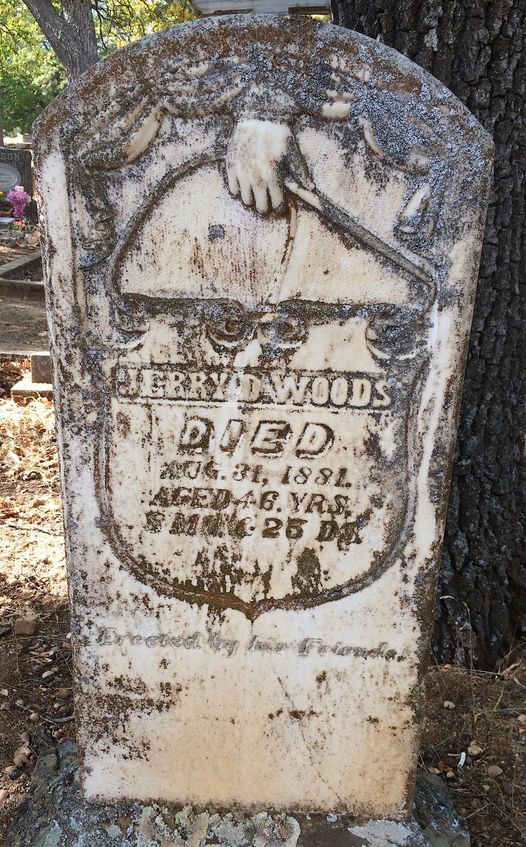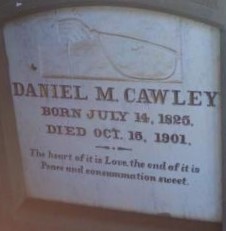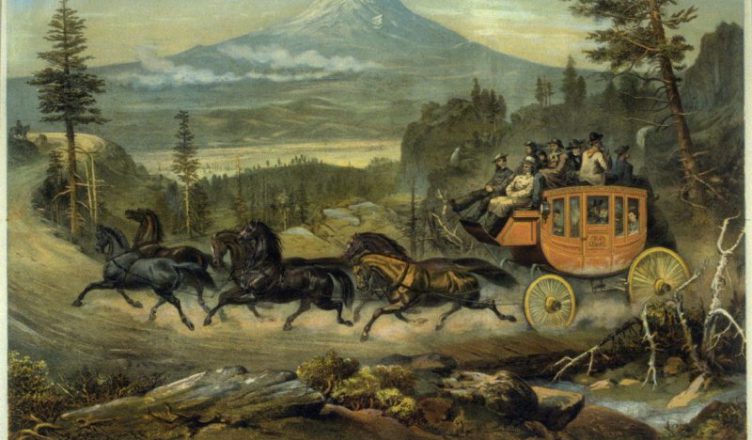C & O Stage, also known as California and Oregon Stage, was the largest stagecoach operation in the region until the railroad marked the end of stage coaching in 1887. Drivers or “whip men,” braved terrible weather, worse roads and attacks by Indians and bandits that were after the load in the “boot.” The “whip” as depicted on Asher Wall’s tombstone below was custom made for each driver. The whip-men never actually used the whip on their horses–driver’s whips made various cracking sounds and along with voice commands signaled the horses to task.

Stage stops were distanced on average about 160 miles apart. Drivers would meet the next driver at a timetable station, and they would exchange mail and passengers and then turn back. Asher Wall’s tragic death was reported in the Weekly Oregon Statesmen in 1874:
Intelligence was received in this city on Thursday of the death of Asher Wall a gentleman well known through the Willamette Valley. He was employed as a mail agent on the O. & C. R.R. in 1870 and ’71 and at the time of his death was driving stage on the overland route. He was found yesterday beneath his coach life being extinct. The team had run away and upset the coach on Myrtle Creek Hill, about nine miles this side of Canyonville. There were no passengers aboard at the time, and poor “Ash” passed away without a living soul near him. He was a noble hearted boy and well-liked by all who knew him.

Jerry Woods, (1834-1881), a native of Vermont, was involved in another unfortunate stagecoach accident in California, also with the C & O Stage Company.
Evergreen Cemetery, Yreka, Siskiyou County, California
The accident was reported in the Record Union (Sacramento, California) on September 1, 1881:
Yreka, September 1st.—The body of Jerry Woods, the driver of the stage who was drowned this morning by the accident, has just arrived here. He was found under his horses in the water, with a deep gash in his forehead from the kicking of the animals. The stage went off a perpendicular bank over thirty feet high into the Scott River, where it is nine feet deep, turning over and landing right side up, leaving but a few inches of stage above water. Mrs. Vest, of Red Bluff, managed to get on a wheel with a child in each arm, and held to the railing of the stage until rescued.
It was further reported that “the C & O Stage Company turned out all their stages and stock for the funeral of the veteran driver, and every other conveyance in town was out also, making one of the largest funeral processions we have ever witnessed in Yreka.”
The citizens of Yreka collected a substantial amount of money to support the Woods family after Jerry’s death. His tombstone in the Evergreen Cemetery states that it was “erected by his friends.” Woods left a wife and five small children to mourn him.

Daniel M. Cawley, (1825-1901), also buried in the Evergreen Cemetery, is in the only mausoleum erected there to date. His crypt is engraved with a hand and a whip, as he was a long-time stagecoach driver as well.
He was proud of the fact that he drove the first stage over Scott mountain over the same route from Sacramento to Portland, and the last stage over the same route when the advent of the railroad furnished other means of travel.
